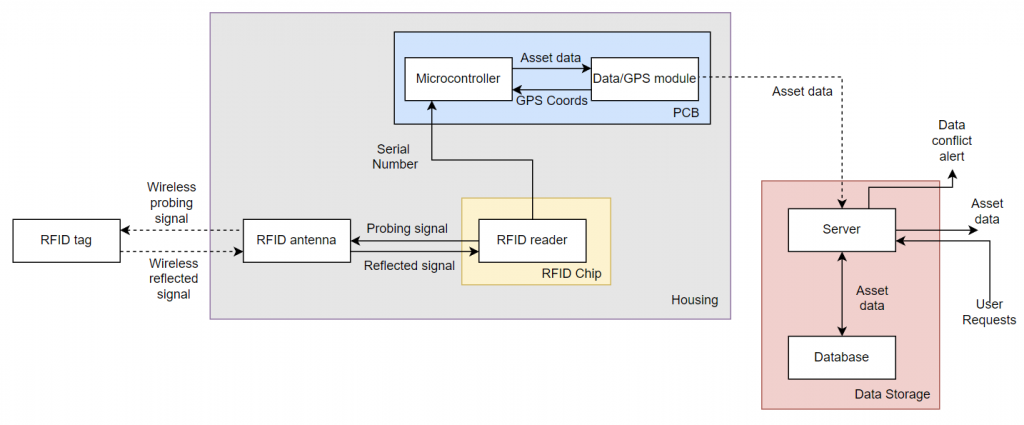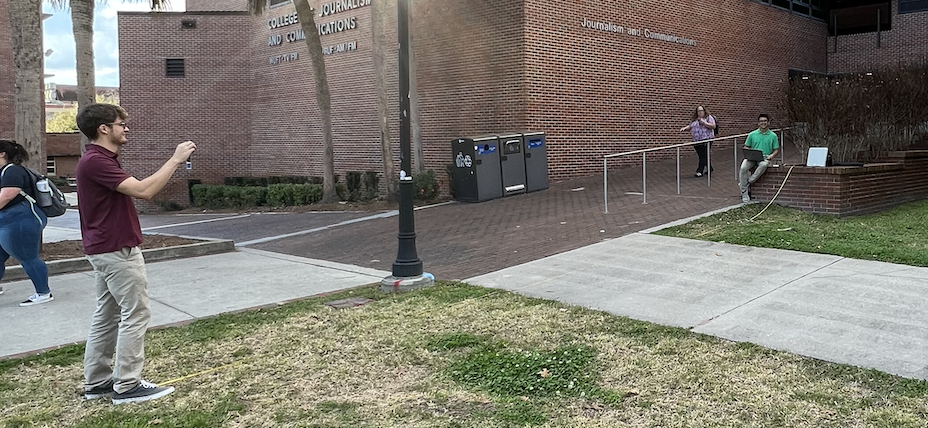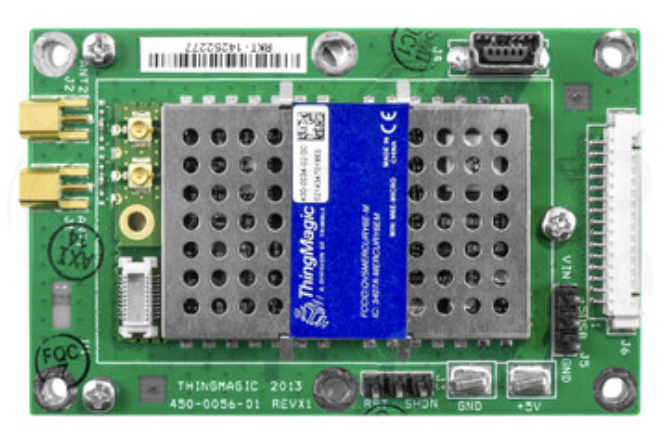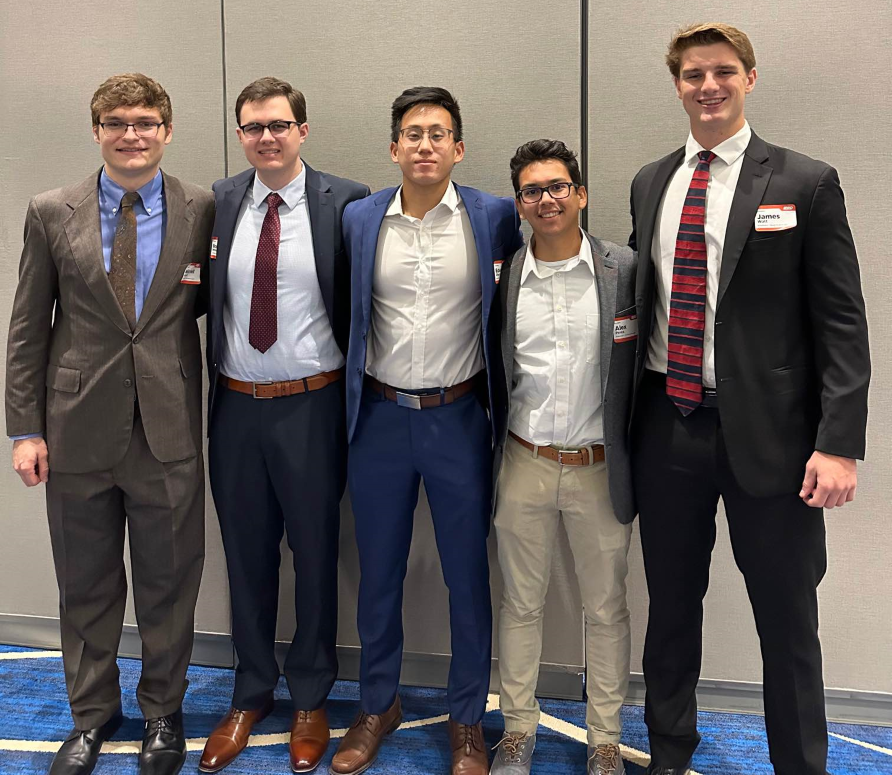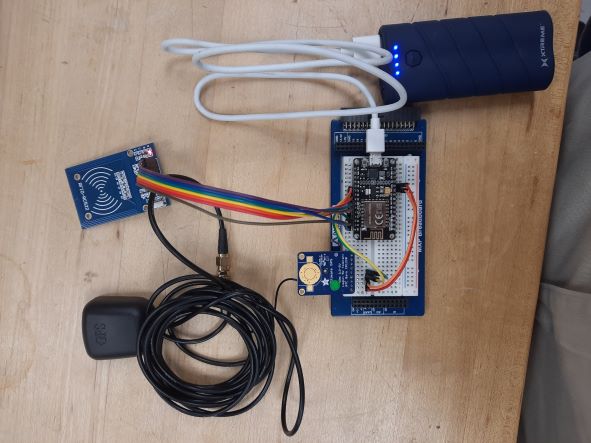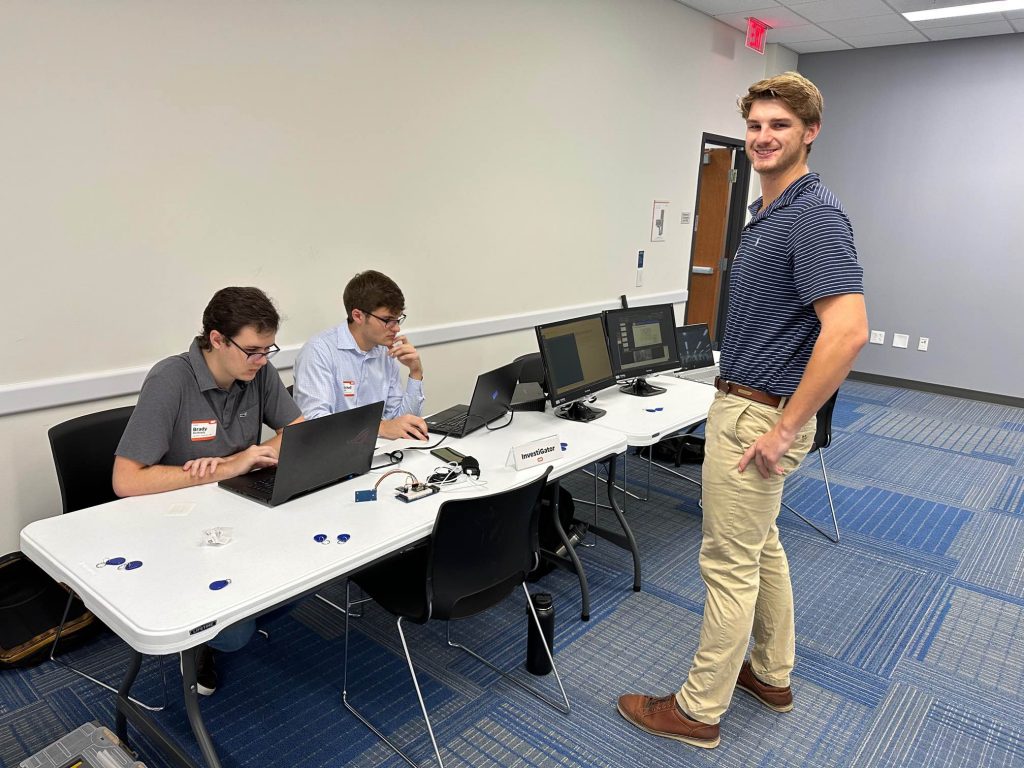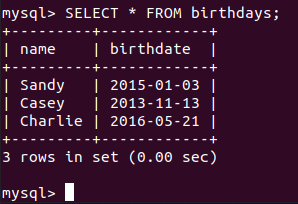This week, all necessary parts are in and the combination of these pieces has begun. The main pieces of concern are the cellular data and GPS combo module, RFID reader, microcontroller, and the server/database. Communication between these parts is currently the most important part of this project, so our time this week was spent getting the transfer of data working. As stated in previous posts/presentations, the flow of data is as follows:
- RFID reader receives a signal from an RFID tag (located on an asset)
- The asset’s serial number is sent to the microcontroller
- The microcontroller gets the GPS coordinates from the cellular/GPS module
- GPS coordinates and serial data is combined and sent to the server through cellular
- The database stores the received data
As of the writing of this post, the asset serial data can be received, some hard-coded data can be sent to the server via MQTT, and the data can be stored into a database. The GPS module has not been tested yet, as most of our work this week was done in areas where a GPS fix wasn’t possible, but the module should work outdoors. The main problem that will be ironed out during this coming week is taking asset data and sending it through the cellular data module. Currently, these cannot be done at the same time, so some additional testing/troubleshooting will need to be done to fix the problem.
